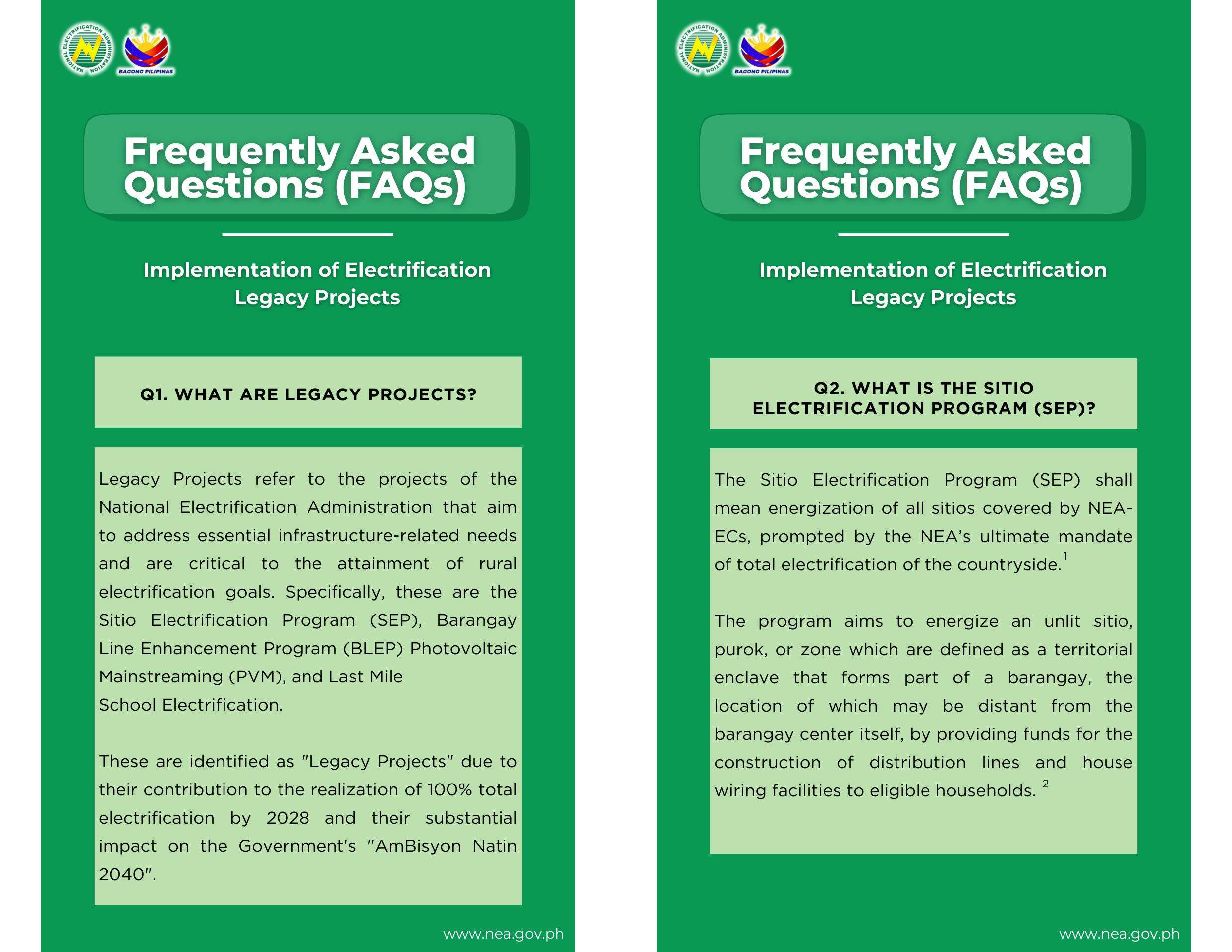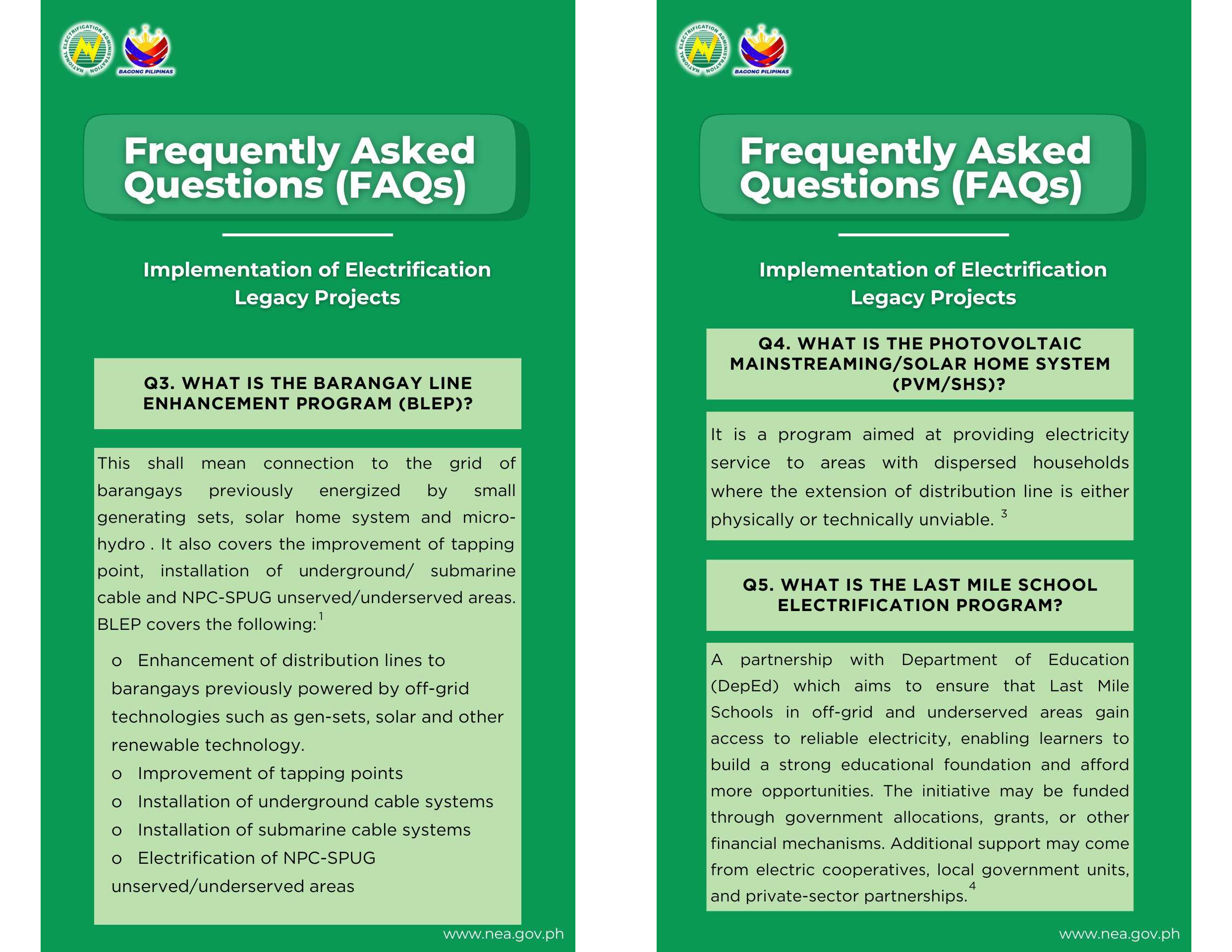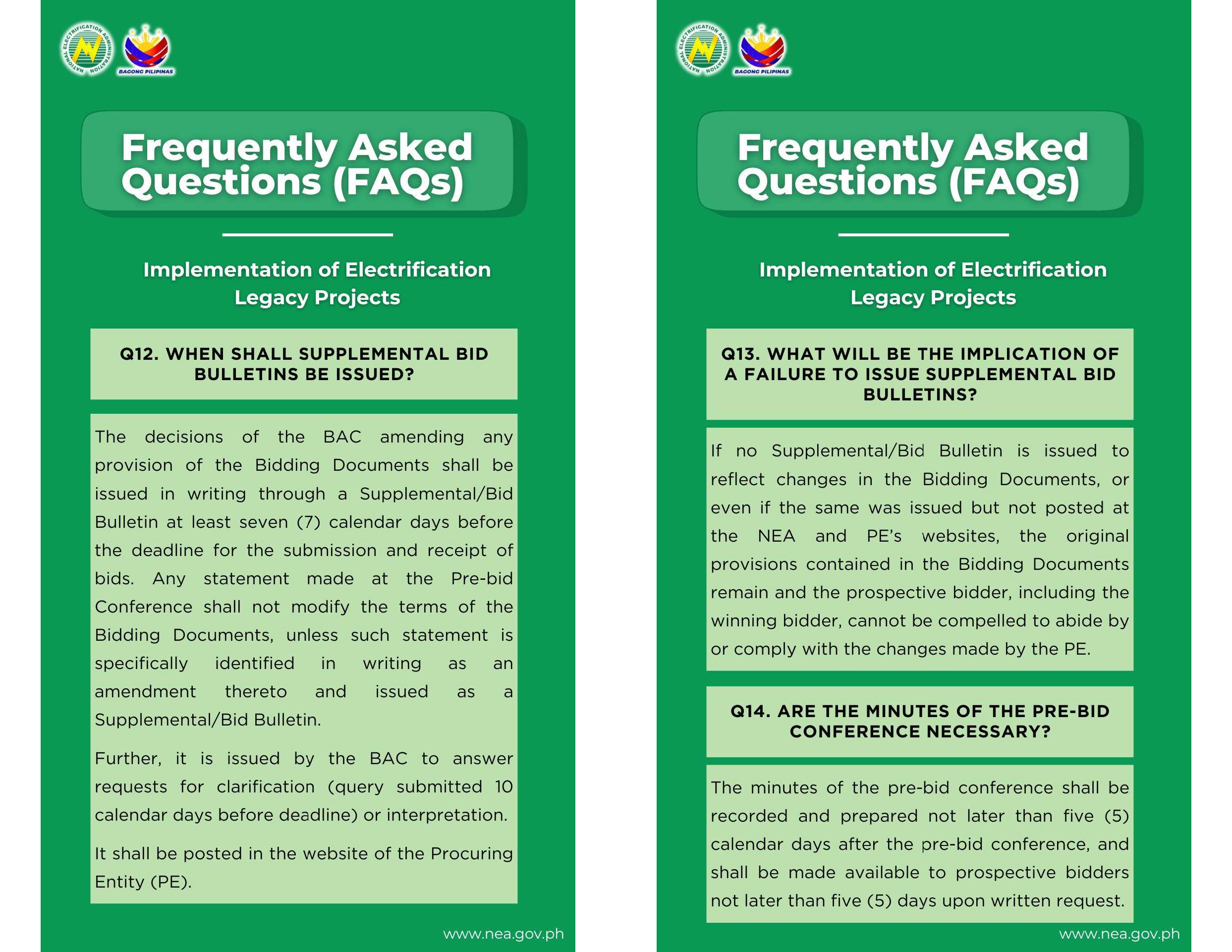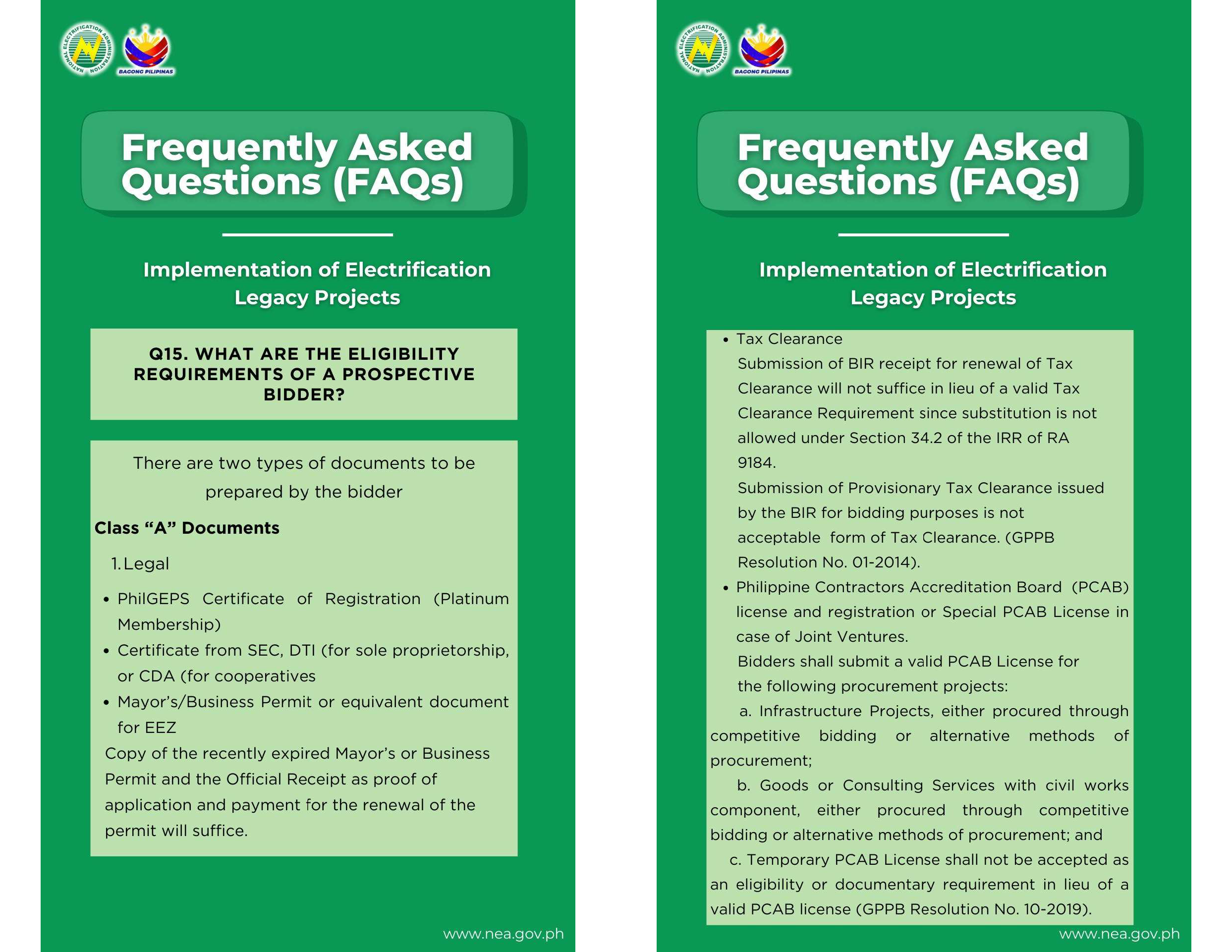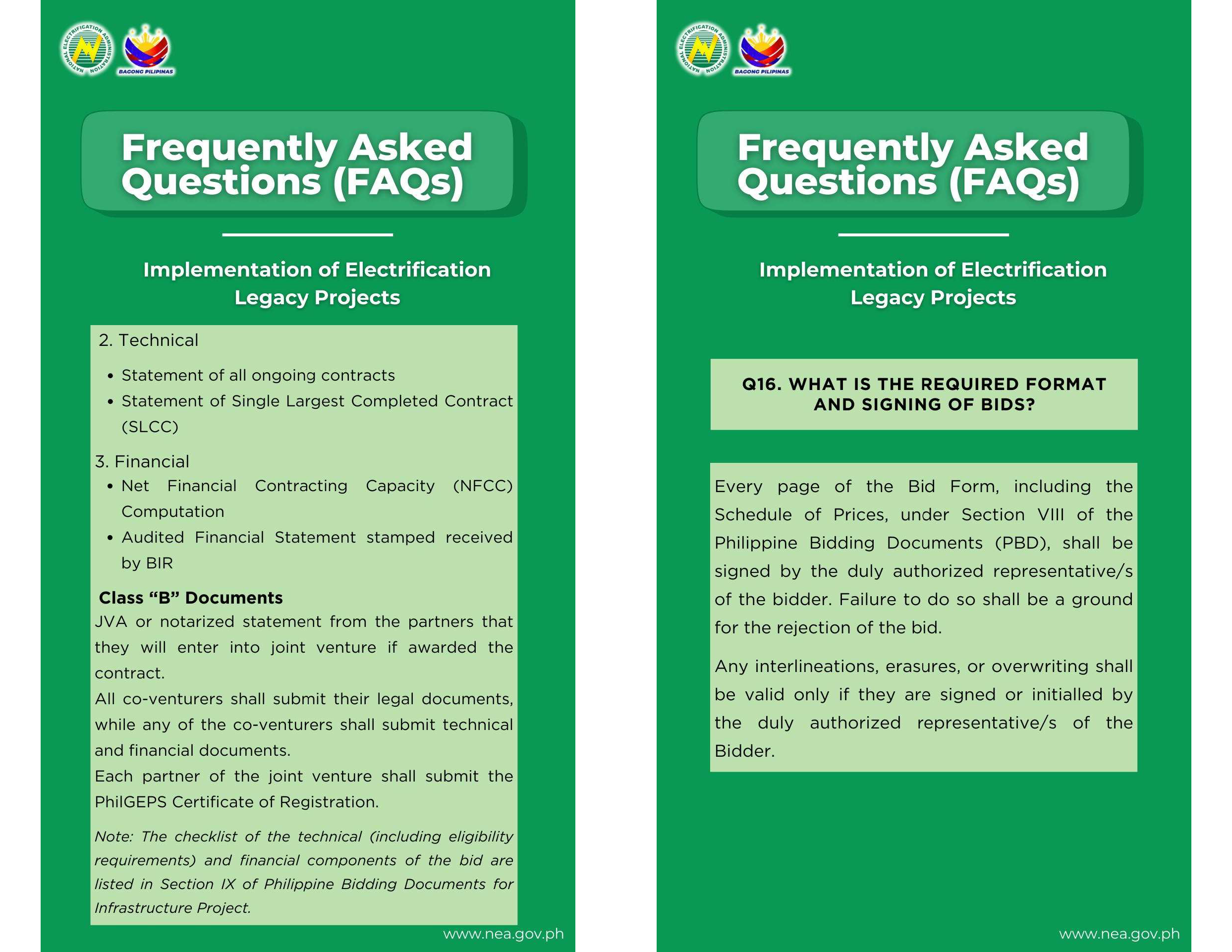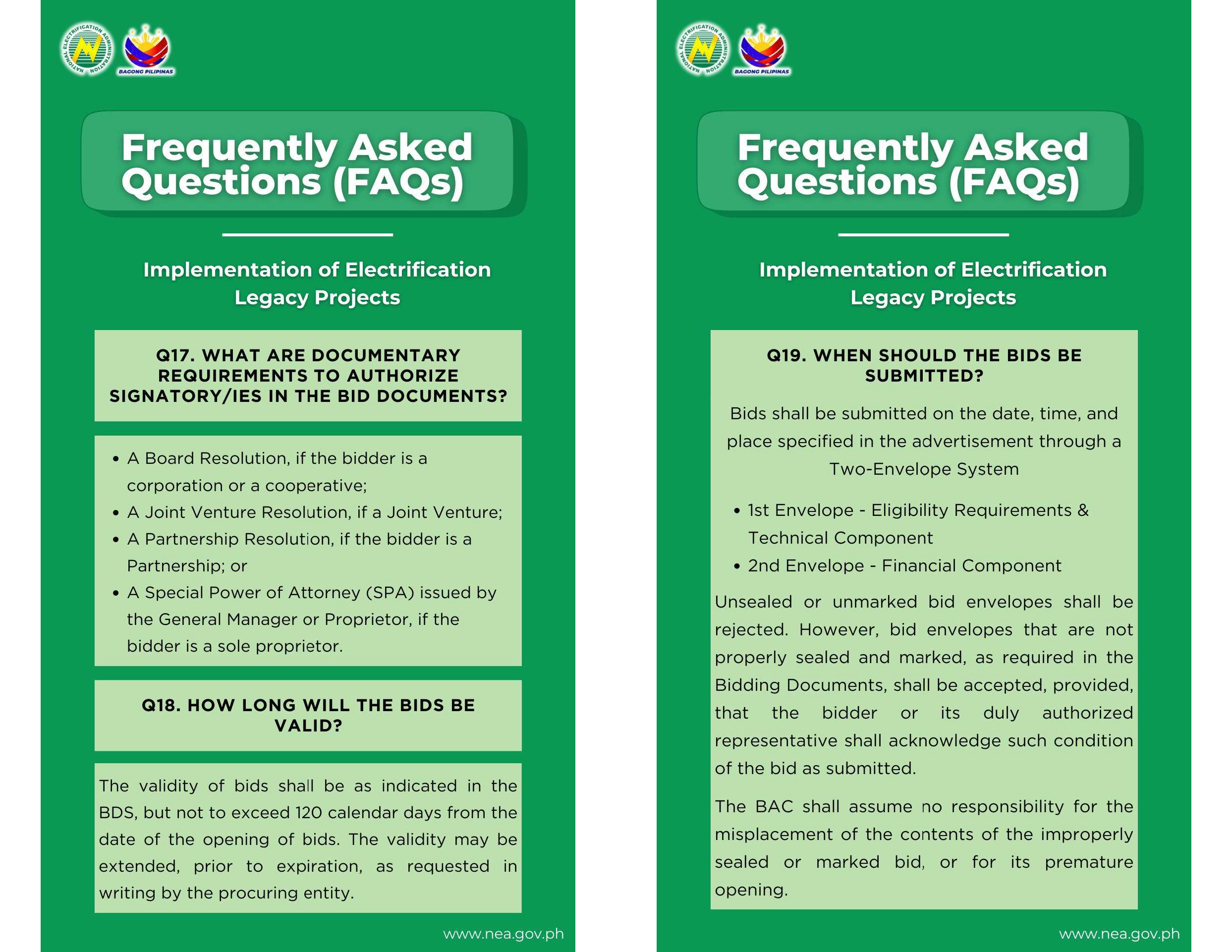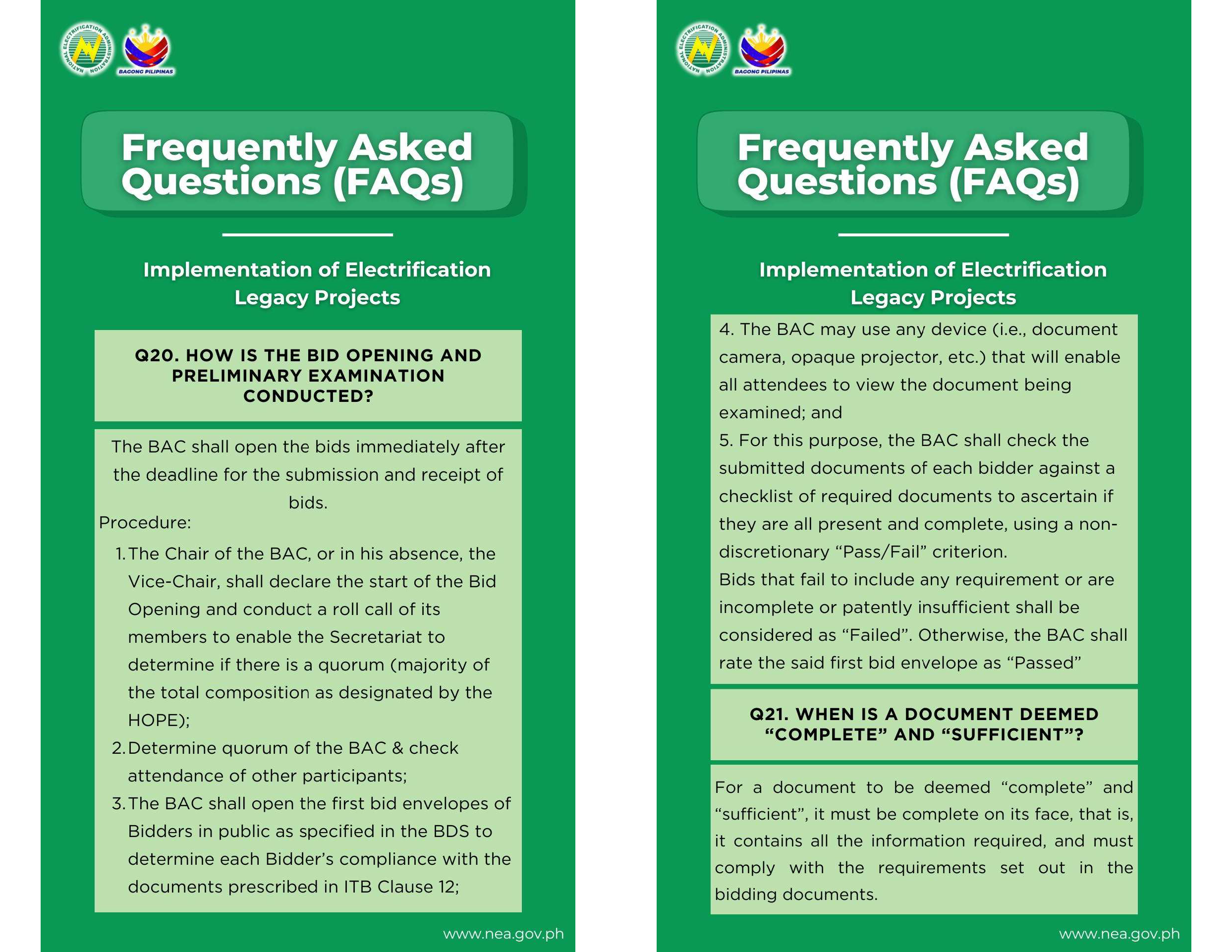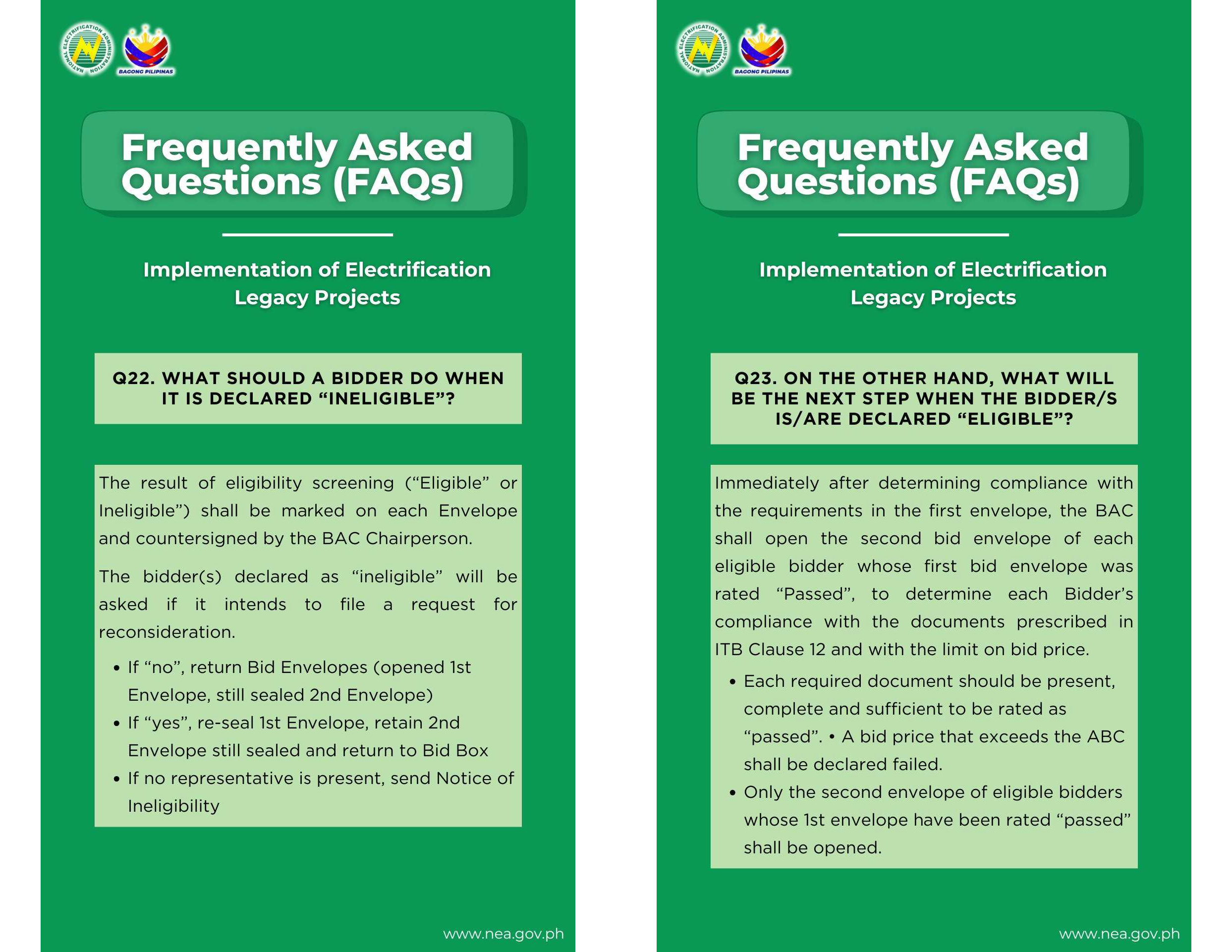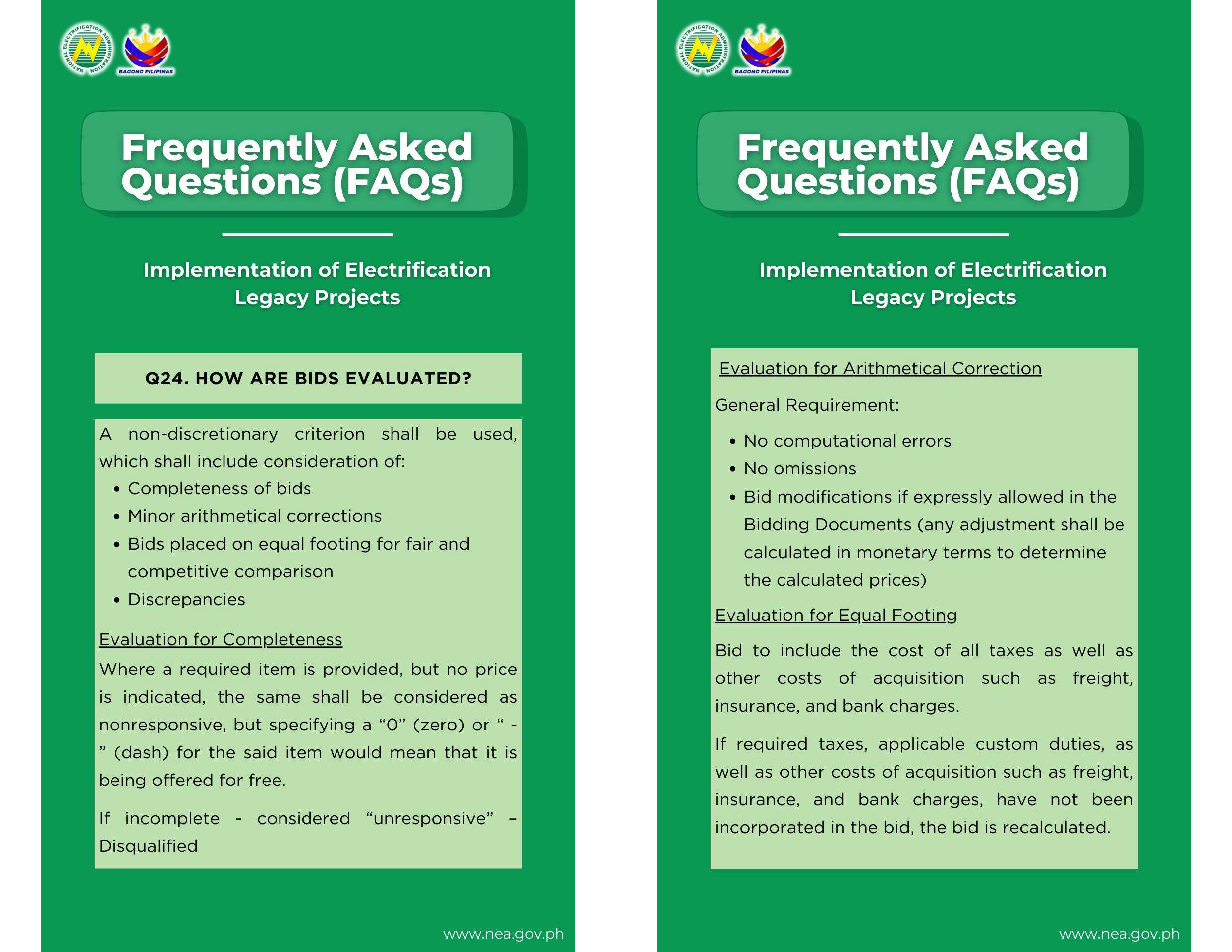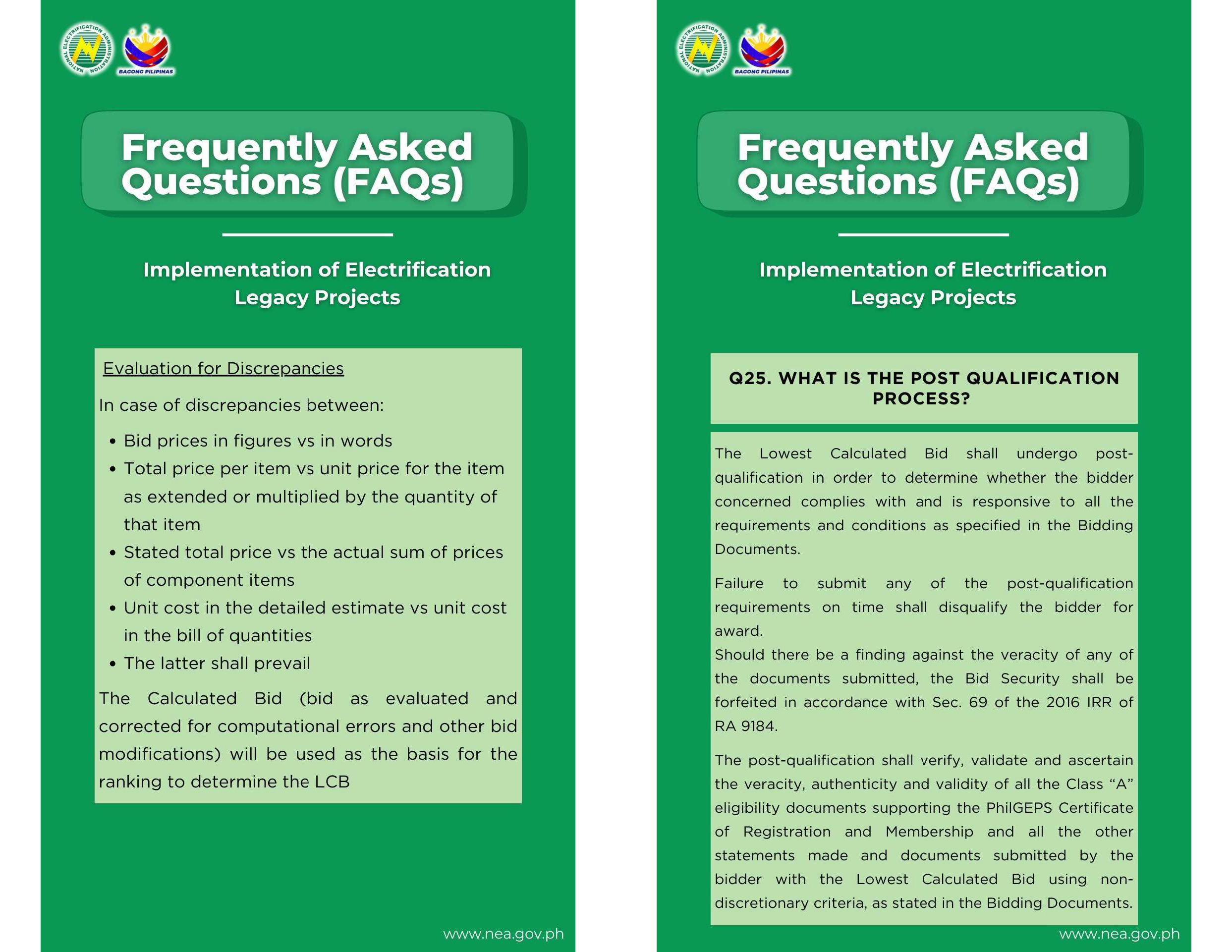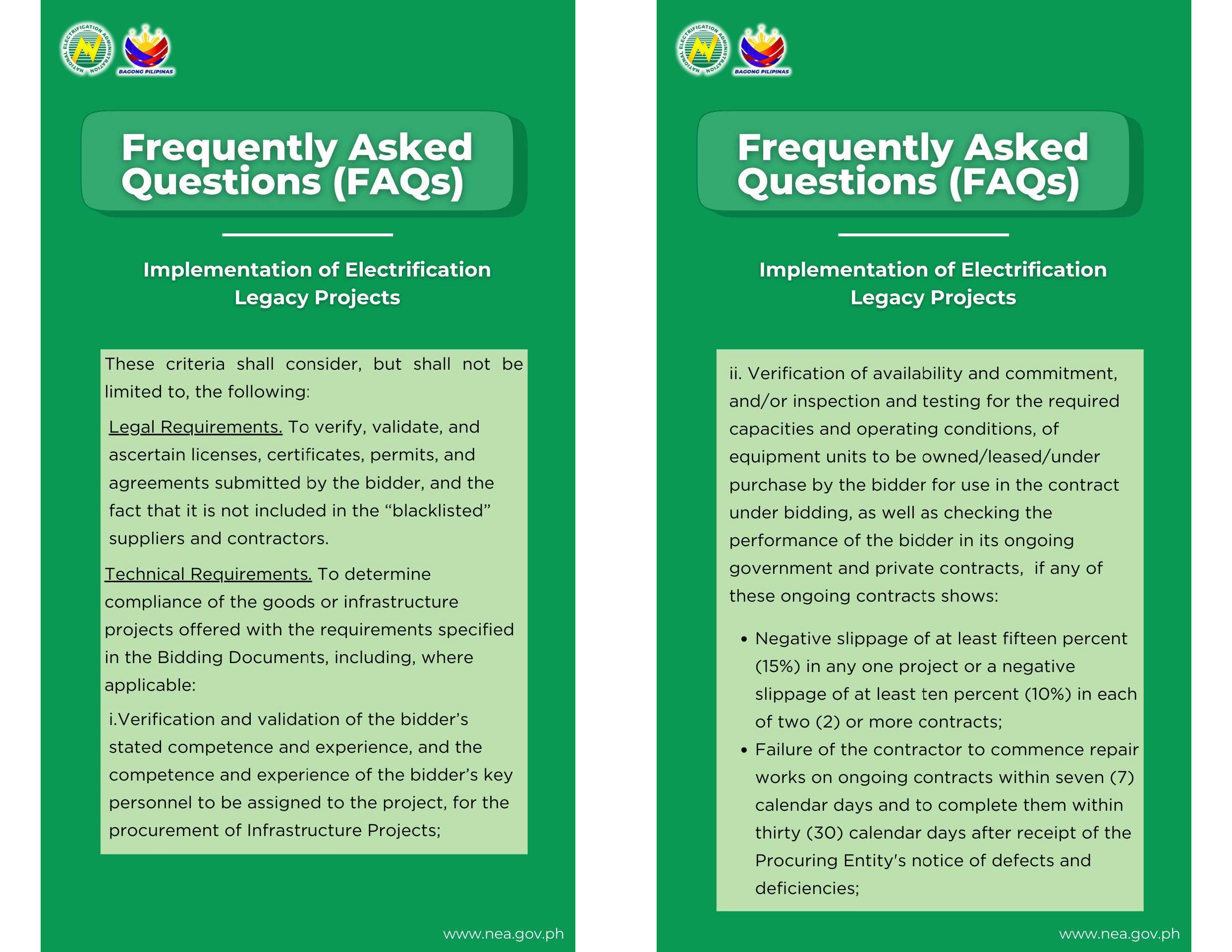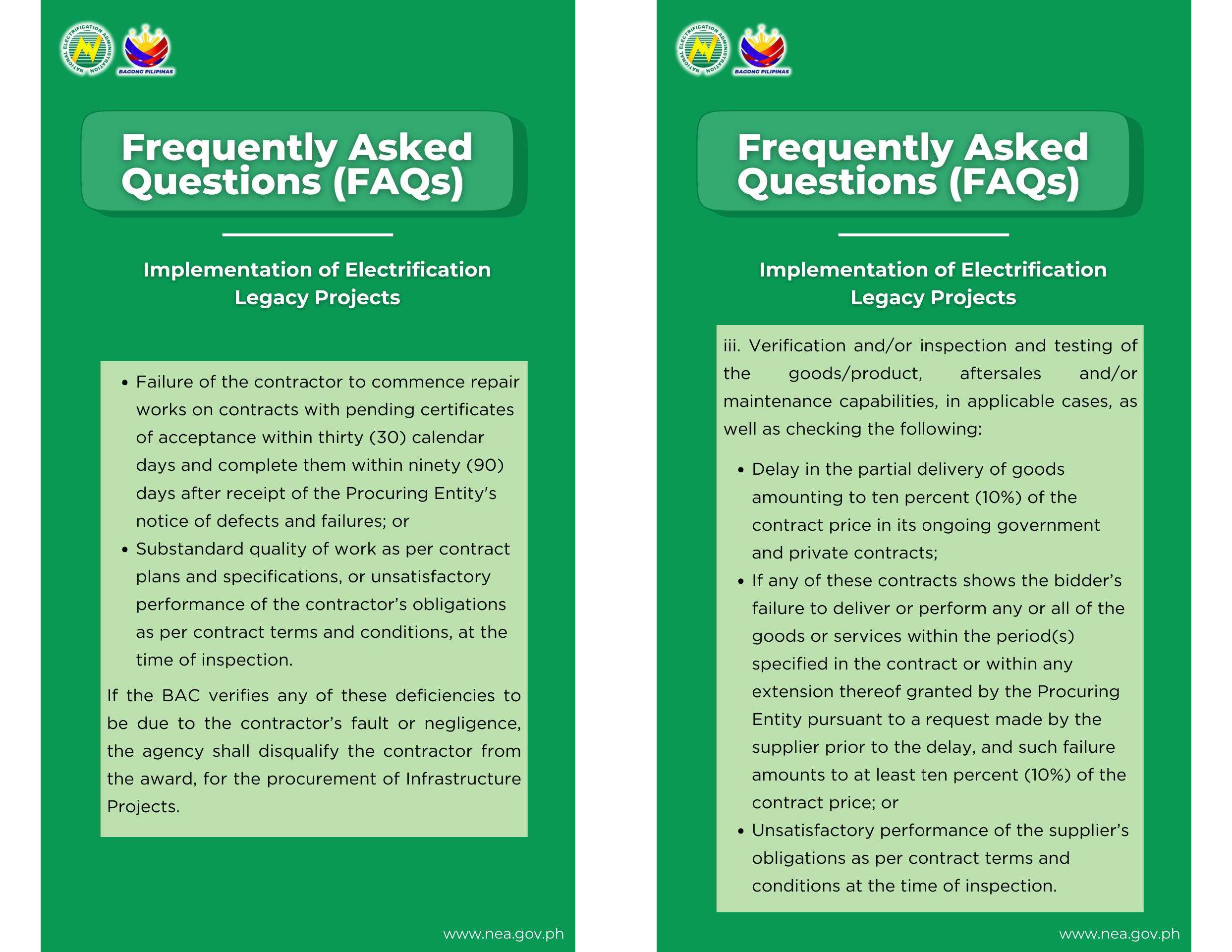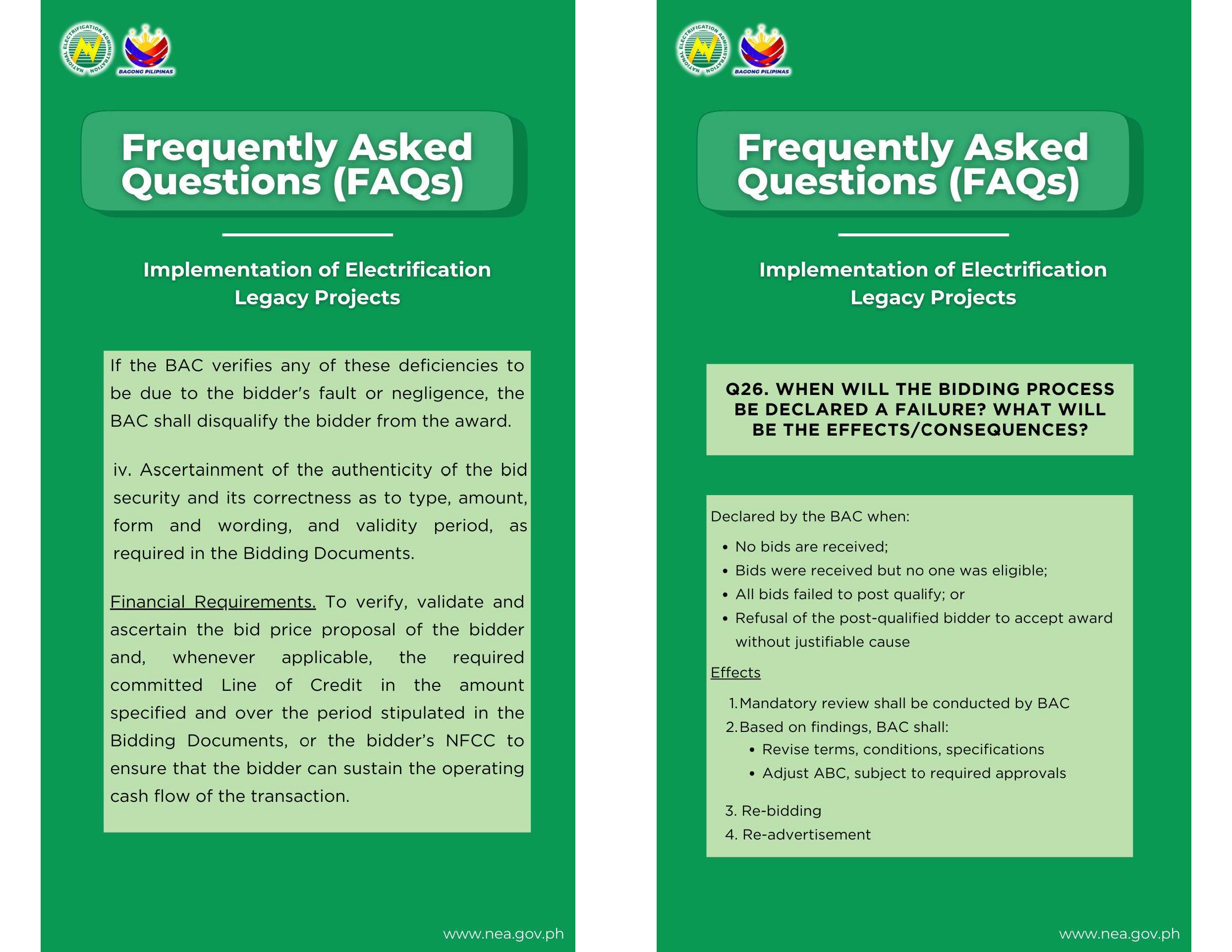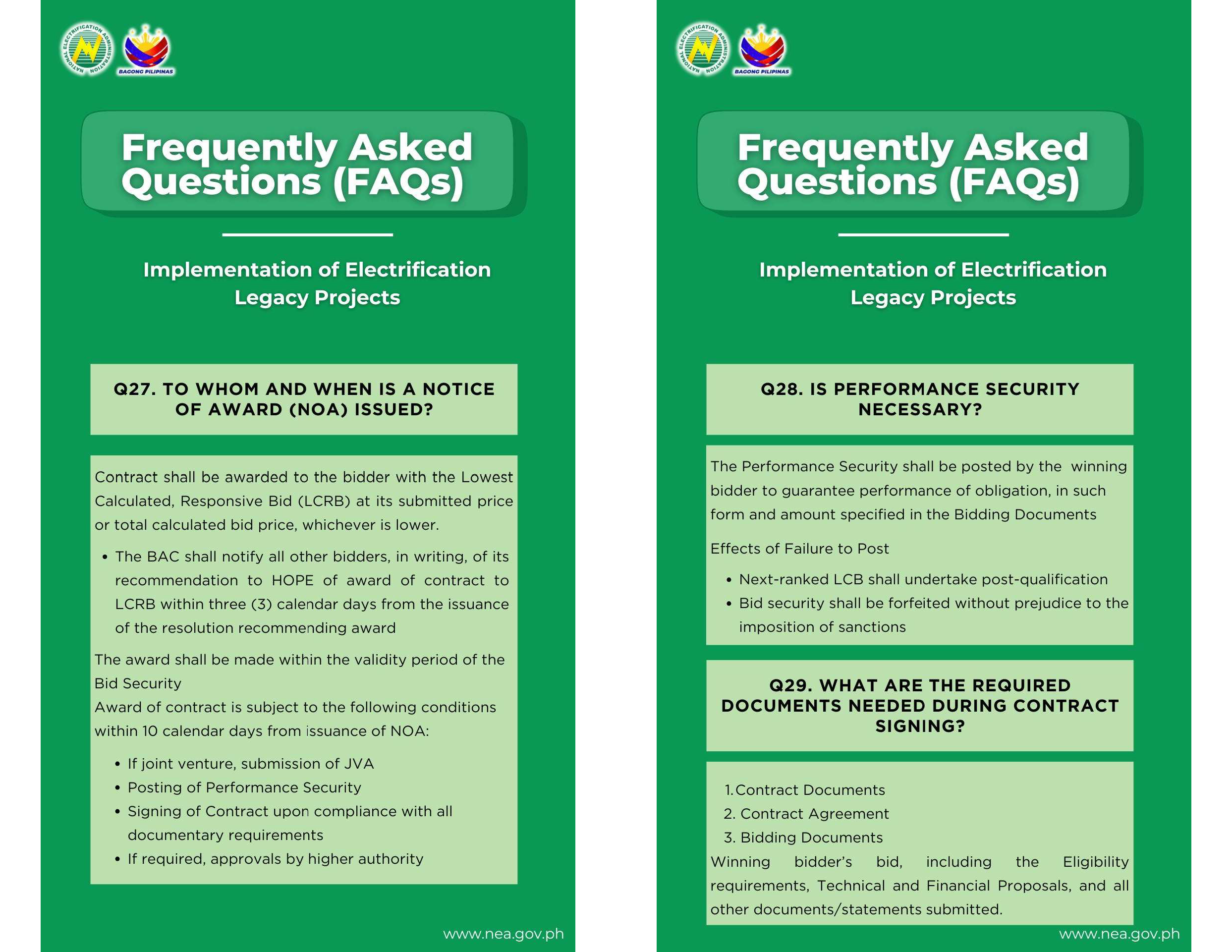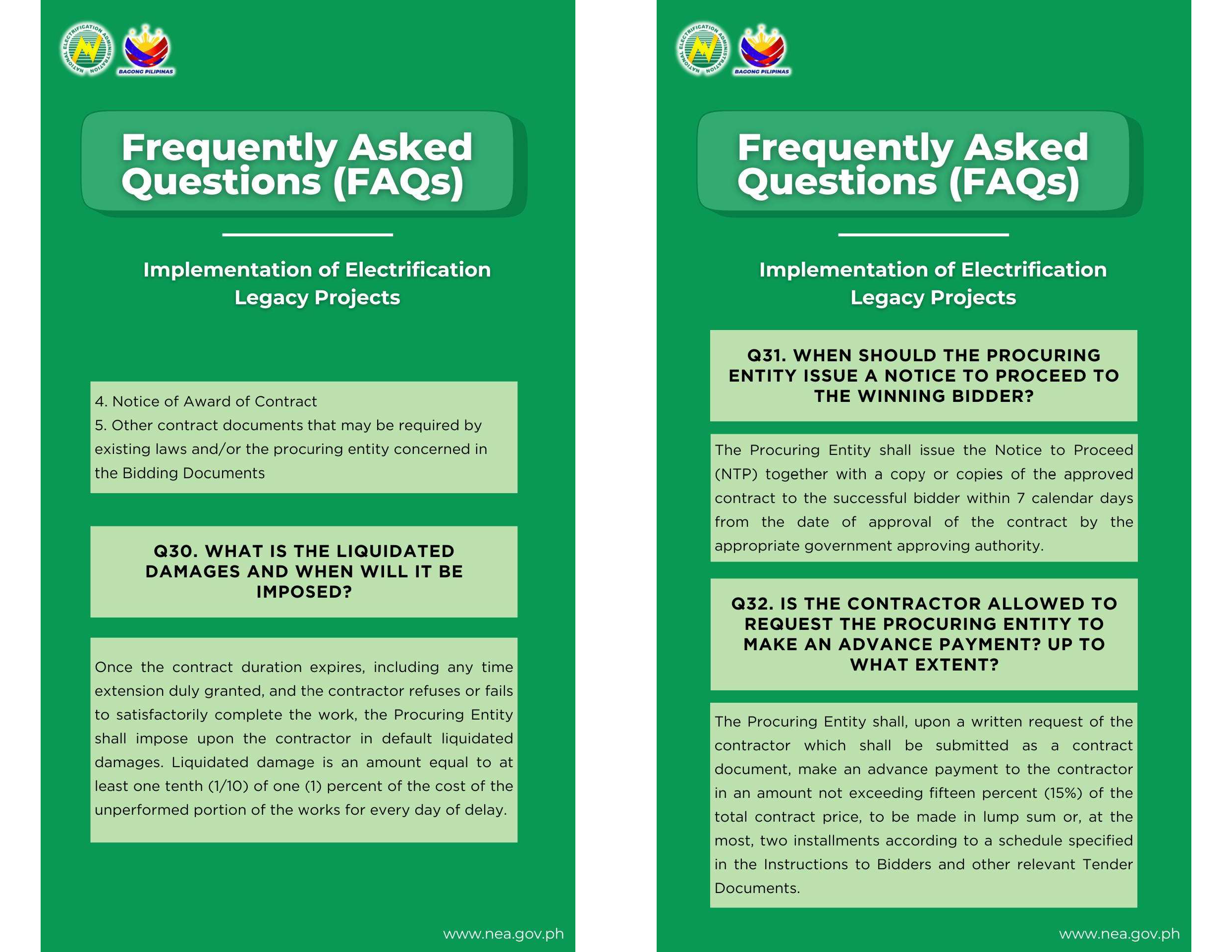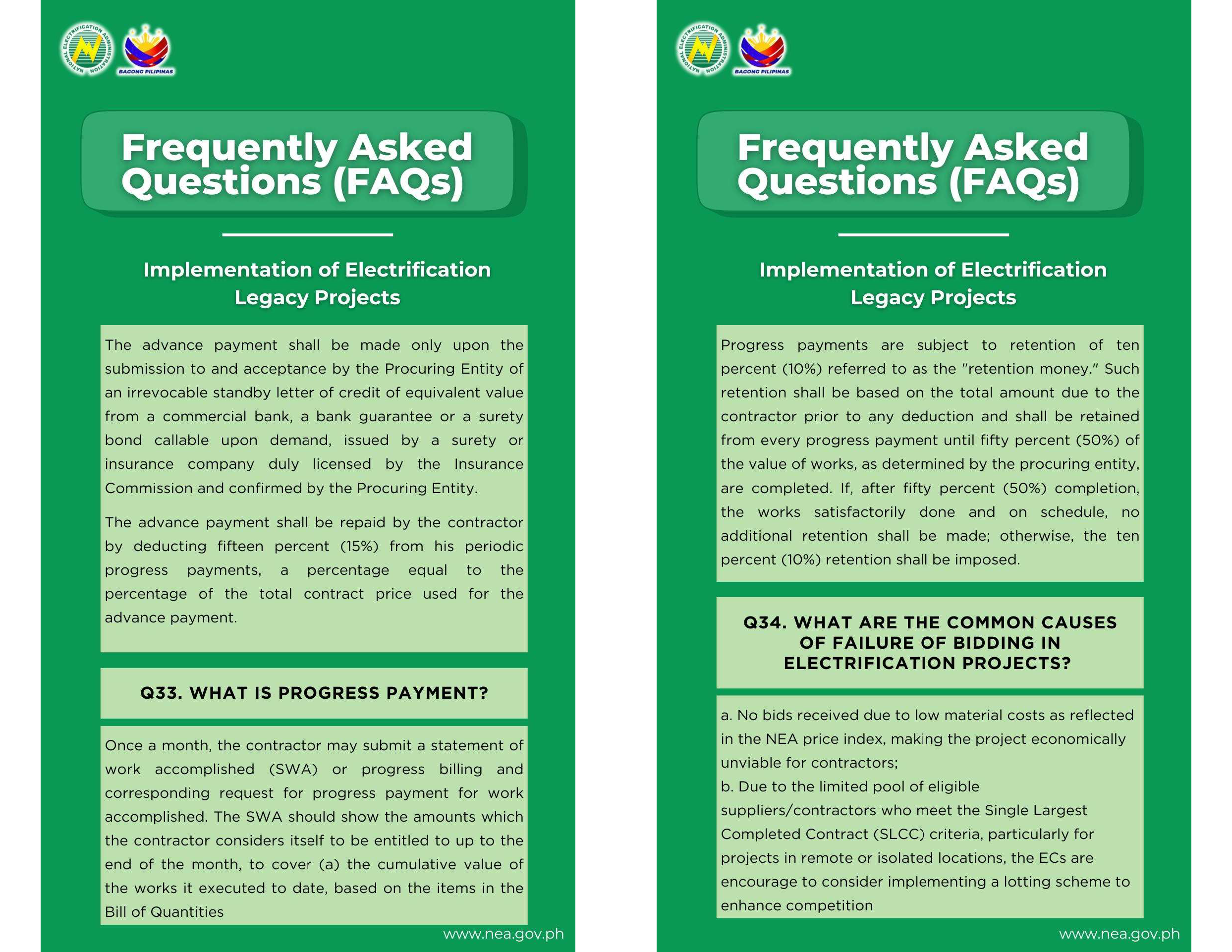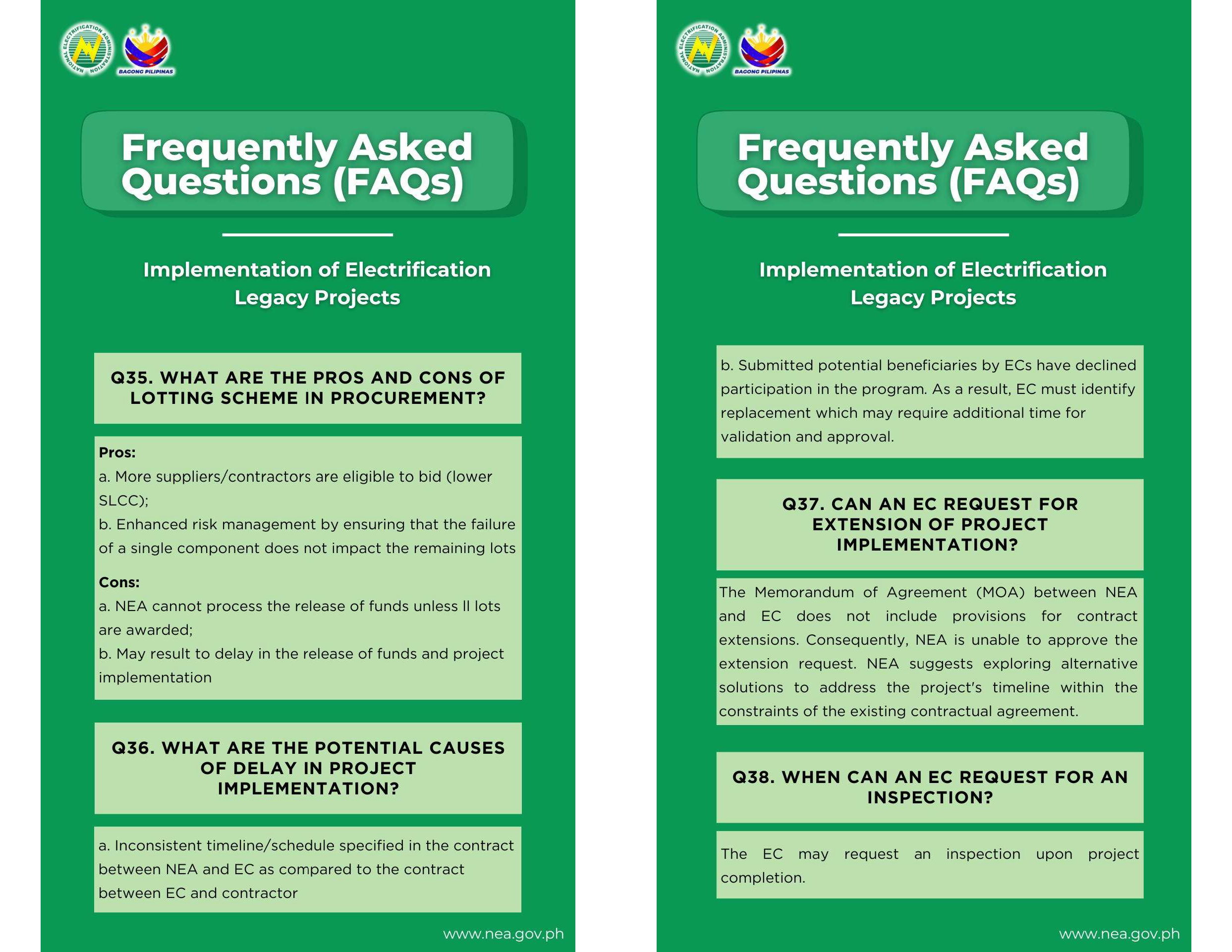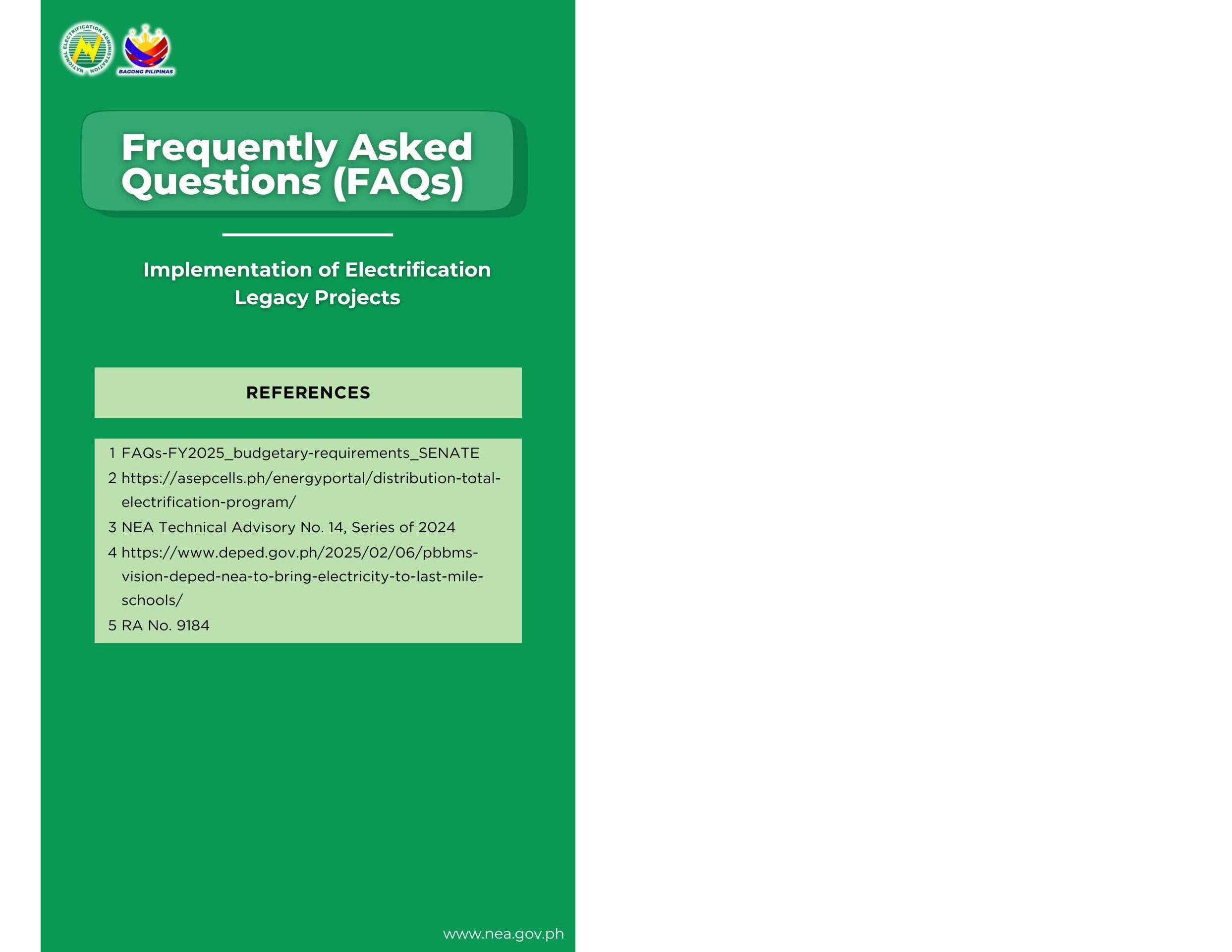1. What is The Philippine Rural Electrification Program?
The Philippine Rural Electrification Program has initiated the lighting up of the countryside from a few hundred households to 15 million connections which benefited 70 million Filipinos for more than five decades. The impact of power in the rural areas has been reflected in the rise of small and medium-scale industries and in the improvement of the lives of rural folks through the availability and use of electric-driven appliances in their homes.
2. What is NEA?
The National Electrification Administration (NEA) is the agency instrumental in the successful implementation of the Rural Electrification Program. It was created on July 28, 1969, through Republic Act No. 6038 which later became a corporation under Presidential Decree No. 269 on August 6, 1973, and has been granted additional power by virtue of Presidential Decree No. 1645 on October 8, 1979. For 53 years, NEA has undertaken the task of improving the socio-economic status of the people in the countryside through electrification. NEA has provided legal, institutional, financial, and technical (LIFT) assistance to the Electric Cooperatives (ECs) which in turn undertake power distribution on an area coverage basis.
Section 58 of Republic Act No. 9136 or the Electric Power Industry Reform Act of 2001 mandates NEA to strengthen the technical capability and financial viability of rural ECs as electric distribution utilities and to prepare said ECs to operate and compete in the deregulated electricity market, specifically in an environment of open access and retail wheeling.
Republic Act No. 10531 also known as the National Electrification Administration Reform Act of 2013 further strengthens NEA’s role in helping the ECs become economically viable and prepare them for the implementation of the retail competition and open access.
3. What are Electric Cooperatives?
ECs serve as NEA’s partners in the REP. They have been organized as private, non-stock, non-profit, non-political entities owned and operated by the consumers they serve.
There are 121 ECs operating nationwide that are rated as AAA, AA, A, B, and C depending on the annual Key Performance Standard (KPS) based on financial, institutional, technical, and reportorial requirements. ECs are also classified as Mega Large, Extra Large, Large, Medium, and Small according to the number of consumers they serve, sales they make and kilometers of line they have constructed.
Financial Assistance of NEA to Electric Cooperatives
1. What are the NEA Enhanced Lending Program For the ECs?
a.) Regular Calamity and Concessional Loans.
These are the regular loan releases chargeable to EC's available loan balance for rural electrification/calamity loans. This intends to finance the implementation of programs of ECs in the ARMM, off-grid Island, and other critically situated ECS.
b.) Logistical Loans
Logistical Loans are provided to address the EC requirements of concessional replenishment of support equipment such as radios, audio-visual equipment, computers, vehicles, testing equipment, safety gear, linemen tools, and other logistical equipment.
c.) Equity Financing Scheme For EC
This scheme is provided to finance the equity requirement of ECs in the procurement of distribution equipment and in the implementation of rehabilitation and upgrading projects.
d.) Acquisition of 69KV Lines from NGCP
This Loan Program is provided to finance the equity requirement of ECs in the acquisition of 69KV Lines from NPC,/NGCP.
e.) Single Digit System Loss
This Loan program is provided to assist the ECs in the reduction of the national average systems loss by at least 1% yearly starting in 2004 and attain a single-digit level before 2010.
f.) Enhancement of ECs Capital Resources (Collateral Sharing)
NEA’s approval of ECs request on a Short-term loan from other sources not requiring encumbrance of real properties or a substantial portion of their properties (without Collateral Sharing);b) Collateral Sharing covering ECs properties mortgaged to NEA in favor of other non-NEA lenders.
g.) Restructuring of Loan
This program gives the ECs a clean slate and allows them to sustain operations and meet maturing obligations.
h.) Subsidy Releases
This provides financial assistance in the expansion/extension of ECs electric distribution line for the barangay/sitios energization program.
i.) Power Account Settlement (Working Capital)
This program covers the financing of the EC's arrearages with NPC/NGCP in order to avail of prompt payment discounts.
- Short Term Credit Facility (STCP)
This will finance the EC's monthly shortfall on the settlement of power accounts with the NPC and NGCP.
- Stand-by Credit Facility (SCF) For Power Accounts With GENCO’s and Market Operator (WESM).
This intends to strengthen the ECs creditworthiness with the GENCO and the Market Operator.
j.) Add-Ons (House wiring)
This Loan Program help finance the housewiring materials and kilowatthour meters of newly connected consumers.
k.) Security Deposit
This Loan Program covers the financing of the security deposit requirements of GENCOs, NGCP and WESM.
l.) Special Retirement Package For Employees
This program help finance the retirement of employees affected by the reorganization.
2. Who are qualified to avail of loans from NEA ?
All electric cooperatives (ECs) under NEA supervision are qualified to avail loans.
3. How can the ECs avail of loans outside NEA ?
NEA has approved a Policy on Collateral Sharing where the ECs can share Mortgaged Properties to other lending institutions through a Mortgage Sharing Indenture (MSI).
4. How can NEA release ECs Contracts of Mortgage (TCTs)?
NEA can only release the ECs Contracts of Mortgage only after full condonation of loans or upon written approval by PSALM.
5. Can EC dispose its Non-Performing Assets ?
Yes, but it needs prior approval of NEA or PSALM and should be through public bidding and the proceeds should be deposited to an escrow account with DBP or LBP.
6. Can an EC donate a portion of its Mortgaged Properties ?
Yes, an EC can enter into a donation agreement with NEA or any government units upon written clearance from PSALM.
7. Will NEA pursue its guaranteeing function ?
As provided in RA 9184, NEA may act as guarantor to ECs purchases in the WESM, however, DBM has not yet appropriated the budget for such.

